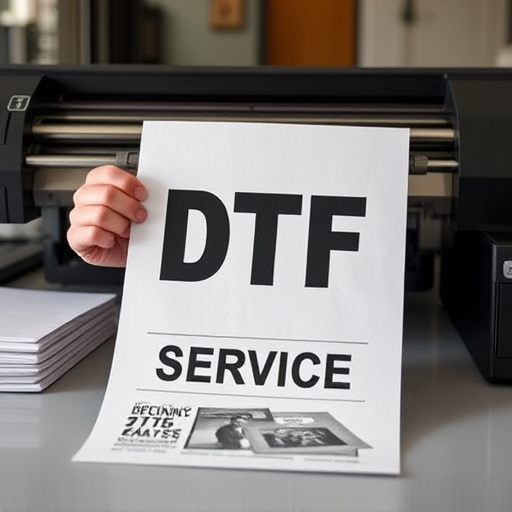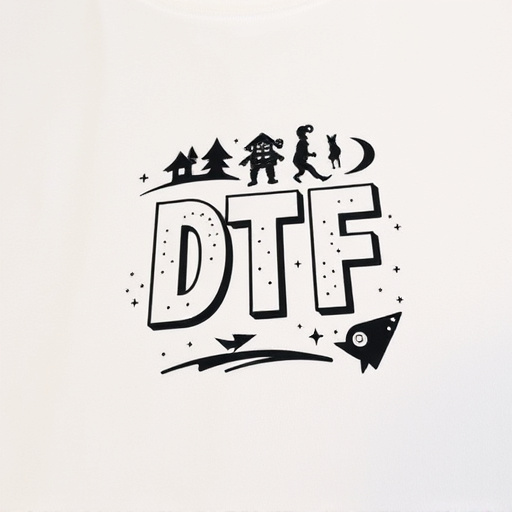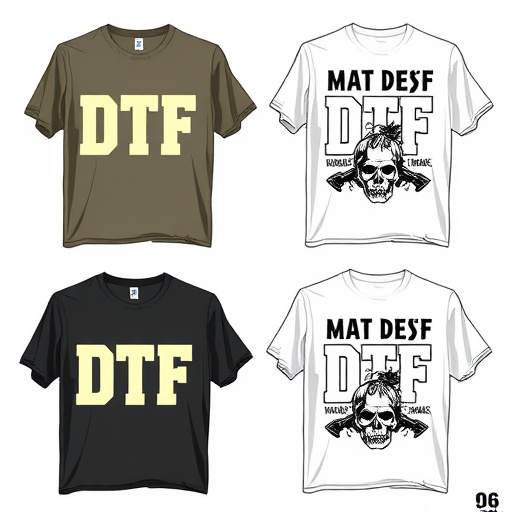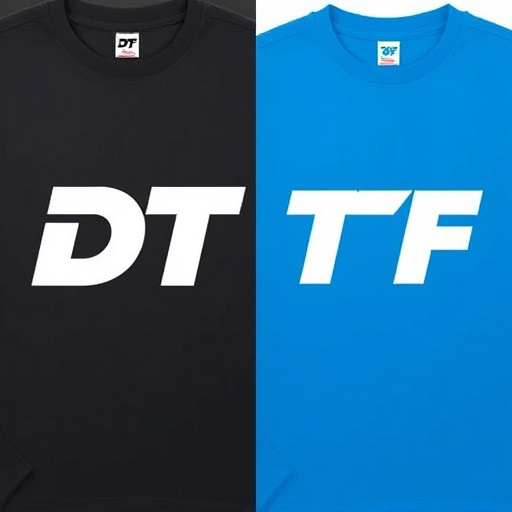DTF (Direct-to-Fabric) shirt printing offers an eco-friendly alternative to traditional methods, minimizing waste with direct design application on fabric. Using sustainable materials like organic cotton and recycled polyester, along with low-impact dyes, ensures a reduced environmental impact. Efficient DTF techniques, such as precise design transfer and eliminating scrap material, further cut waste. Simple logo designs and vector graphics contribute to a greener manufacturing process for clothing brands.
“Unleash the power of sustainable fashion with eco-friendly DTF shirt printing—a game-changer in the apparel industry. This comprehensive guide explores innovative practices for creating stunning, personalized designs without compromising the planet’s health. From understanding the DTF process to choosing recycled materials and minimizing waste, we’ll navigate you through every step. Embrace a greener future while staying ahead in the trendsetter’s world of DTF shirt printing.”
- Understanding DTF Printing: An Eco-Friendly Approach
- Sourcing Sustainable Materials for Shirts
- Minimizing Waste: Printing Techniques and Tips
Understanding DTF Printing: An Eco-Friendly Approach
DTF (Direct-to-Fabric) shirt printing is a sustainable and eco-friendly method revolutionizing the way custom graphic tees are created. Unlike traditional heat pressing methods that use multiple layers of paper and plastic, DTF for custom graphic tees involves applying designs directly onto custom sheets, which are then heat pressed onto garments. This approach significantly reduces waste as there’s no need for intermediate transfer papers, making it a more sustainable option in the world of DTF for custom graphic tees.
By skipping the extra steps and materials involved in conventional methods, this eco-friendly practice not only minimizes environmental impact but also allows for intricate and vibrant designs. Custom sheets for heat pressing designs onto garments offer a straightforward and efficient way to create unique, personalized tees while promoting sustainability. This method is particularly appealing for small batch orders and one-off projects, ensuring that every step in the process contributes to a greener environment.
Sourcing Sustainable Materials for Shirts

When it comes to eco-friendly DTF shirt printing, one of the key aspects is selecting sustainable materials. Opting for organic cotton or recycled polyester for your blank tees significantly reduces the environmental impact compared to traditional synthetic fabrics. These materials not only minimize exposure to harmful chemicals but also contribute to a circular economy by reducing waste.
Moreover, sourcing custom graphic tees or custom DTF transfers from suppliers committed to ethical practices ensures that every step of the process aligns with sustainability goals. Whether you’re printing for hoodies or t-shirts, choosing providers who use low-impact dyes and inks further enhances the eco-friendliness of your DTF printing endeavors, making it a responsible choice for both businesses and consumers.
Minimizing Waste: Printing Techniques and Tips

In the realm of DTF Shirt Printing, minimizing waste is paramount for sustainable practices. One of the key aspects in achieving this is adopting efficient printing techniques. Direct to film (DTF) printing, for instance, offers a significant advantage by eliminating the need for separate platens and reducing ink wastage. This method allows for precise transfer of designs directly onto the garment, minimizing scrap material.
Additionally, careful consideration during the design phase can further reduce waste. Brands should opt for simple, clean logo designs that require less ink and are easier to print accurately. Using vector graphics ensures scalability without compromising quality. By combining these practices, clothing brands can produce high-quality DTF prints while significantly cutting down on material waste, contributing to a greener manufacturing process.
DTF (Direct to Fabric) shirt printing offers a sustainable alternative to traditional methods, allowing printers to create high-quality, eco-friendly garments. By understanding the process, sourcing recyclable materials, and adopting efficient waste management techniques, businesses can significantly reduce their environmental impact. Implementing these eco-friendly practices not only benefits the planet but also caters to the growing demand for sustainable products among consumers. Adopt these strategies to lead the way in environmentally conscious DTF shirt printing.














